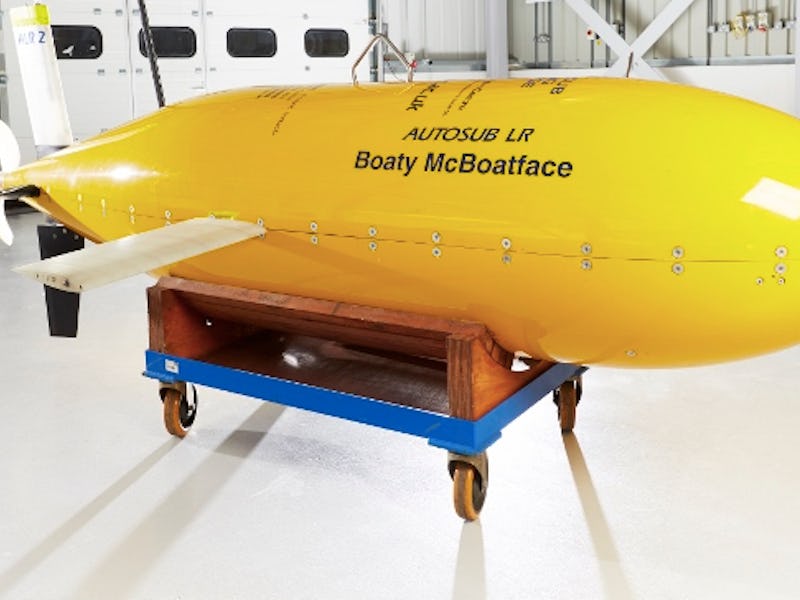England’s latest trio of Antarctica-bound autonomous underwater vehicles share a name representing the nexus of science and internet trolling. Boaty McBoatface is the name that won in an overwhelming landslide in a 2016 online poll to christen a research vessel. Fun policeman and United Kingdom science minister Jo Johnson ignored the results and named that ship the R.S.S. David Attenborough instead, but the will of 120,000 people now lives on with these three subs. Fortunately, the original intent of the scientists behind the vehicles lives on, too.
The first of the Boaties departs from Punta Arenas, Chile on Friday aboard the polar ship the RSS James Clark Ross. Technically called an Autosub Long Range, it is an unmanned and untethered robotic vehicle designed to withstand the world’s deepest and coldest waters. This Boaty will explore and assess water flow in the Orkney Passage, a 3,500-meter-deep region 500 miles from the Antartica Peninsula. Boaty #1 will measure the ocean turbulence in this area to determine how that area has been affected by climate change.
Scientists believe that turbulence at the bottom of Orkney Passage causes warm water to enter the deep current, which causes serious issues as these warm waters spread throughout the ocean. A probe on the first Boaty will assess this turbulence and give scientists a better idea of the scope of the problem.
“There are ‘rapids’ and ‘waterfalls’ that are occurring within the channels and valleys that surround underwater mountains in the passage,” Dr. Eleanor Frajka-Williams, a Southhampton University professor working on this project, told the BBC. “Boaty is going to make measurements within these ‘streams’ and ‘rivers’ of the smallest-scale motions to try to understand how that water is being changed as it leaves the formation regions around Antartica and then spreads out over the world’s oceans.”
While the first Boaty is set to explore the Orkney Passage, the other two Boaty McBoatfaces are necessary for exploring multiple regions simultaneously, which the team behind the underwater robots plans to do eventually. The National Oceanography Centre, which developed the Boaty trio, admits it plans to design a public outreach campaign for each Boaty, which — well, well well look who’s now embracing what was going to be a dream deferred.
